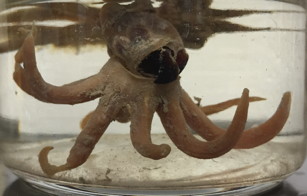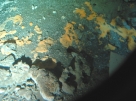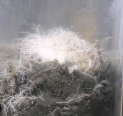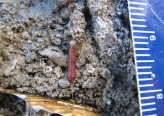If you copy and use
photos, please WRITE for PERMISSION first at ![]() .
.
Some of these photos are mine, others are ones I took from
theROV Oceanic Explorer's camera monitor.
If you can help us identify species with a *, please contact me at
the email just above.
Note: many of the specimens have been deposited at the Field Museum in
Chicago and loans of the material can be arranged through Janet Voight
(voight@fmnh.org) or John Slapcinsky (Slapcin@fmnh.org)
Return to my MAIN DEEP-SEA PAGE for details on animal collection and for TOPIC CONTENTS (or use pull-down menu, right).


















